- March 21 2019
Visual Search: Transforming the Modern Shopping Experience
A new customer shops at your online store. Do you know how they got there?
A few years ago, the obvious answer may have been an ad or a friend’s recommendation. These days, through personalized shopping, the path buyers take to reach your store is no longer as straightforward. The consumer decision journey, says McKinsey, now looks like a looping circular route with several touchpoints, rather than a simple, narrow funnel.
One of the technological innovations that have helped retailers increase these touchpoints is AI-driven visual search. In a nutshell, it entails providing a machine or system a photo as input, and receiving a related image as output. The applications of this technology are vast, ranging from personal recommendations to augmented reality.
In fact, visual search has become such a pivotal part of modern shopping habits that “by 2021, early adopter brands that redesign their websites to support visual and voice search will increase digital commerce revenue by 30 percent,” according to Gartner.
Why visual search & personalized shopping have become so popular?
One can look to shifting digital trends to form a bigger picture of visual search adoption. Rising smartphone and internet penetration rates have given more people the ability to snap, upload, and find pictures on the go.
This increased use of the Internet has opened up new avenues for customers to seek and find inspiration for their next purchase. A person may see a new fashion trend on the street, in a brick-and-mortar shop, or a random social media post. However, they might not know the right keywords to find the product online and compare prices.
In fact, we ran an experiment to understand just how difficult it may be to find the product you want by guessing at keywords.
The Dress Challenge Example
During The Dress Challenge, we pitted manual keyword search against AI-driven visual search. We asked 149 tech-savvy men and women to find a dress, which was displayed at a booth, in an online store using keywords. After one minute and 30 seconds, 96.6 percent of the searchers gave up. Those who did find the dress managed to do so after four to six minutes of manual search.
But when the participants snapped a photo of the dress and let the visual search tool do its work, they found the dress in the online store within two to three seconds.
It’s no surprise, then, that a study of Gen Z and millennial consumers found that 62 percent wanted visual search capabilities when they shop online.
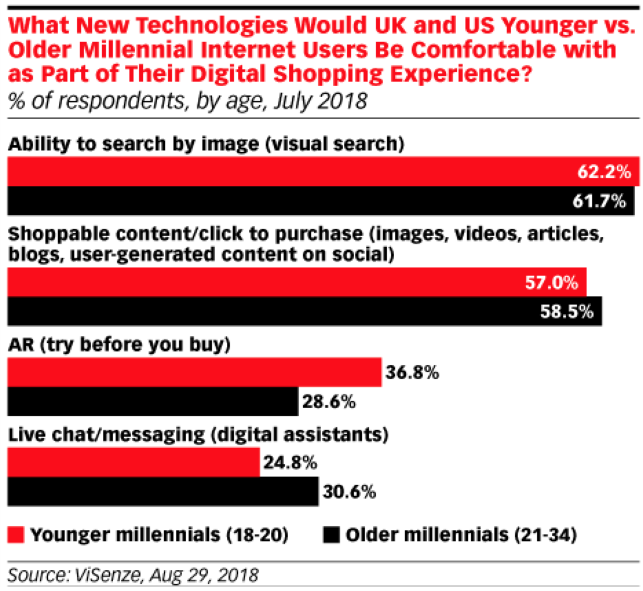
Social media use has become more visual, too. Facebook’s former chief product officer, Chris Cox, forecasted that sometime in 2019, the Stories format will surpass news feeds “as the primary way people share things with their friends”. Around 300 million people use Facebook and Messenger Stories daily; half a billion do so for Instagram Stories.
Brands have been quick to respond, linking visuals to shopping pages (more on that later). And of course, photo and video production play a big role in influencer marketing campaigns on visual-driven platforms like YouTube, Instagram, and Snapchat.
But it’s the advancement of AI that has really transformed visual search into a powerful commerce tool. Visual search has made the modern personalized shopping experience more intuitive and efficient. It has also helped retailers increase their products’ visibility amidst the overload of content online.
5 Visual Search Applications Impacting Retail & Personalized Shopping Experience
With the advantages and increasing adoption of visual search, it’s clear that retailers who have not yet leveraged this technology need to do so soon. This will not only allow them to remain competitive but reach customers at different touchpoints, both online and offline.
1) Search by Image
Shoppers today aren’t limited to a single store’s inventory. They don’t have to scour through a retailer’s racks or online catalogue to find something they like. Instead, they can simply snap a photo on their smartphone, upload it, and find the product (or similar) for sale online.
Search engines, e-commerce giants, and social media platforms know this. Google, Amazon, and Snap Inc rolled out visual search tools in 2018. Pinterest processes more than 600 million searches a month using the visual search tool embedded in the app’s camera. Smartphone manufacturers like Samsung have also introduced visual search features for online shopping on their more recent devices.
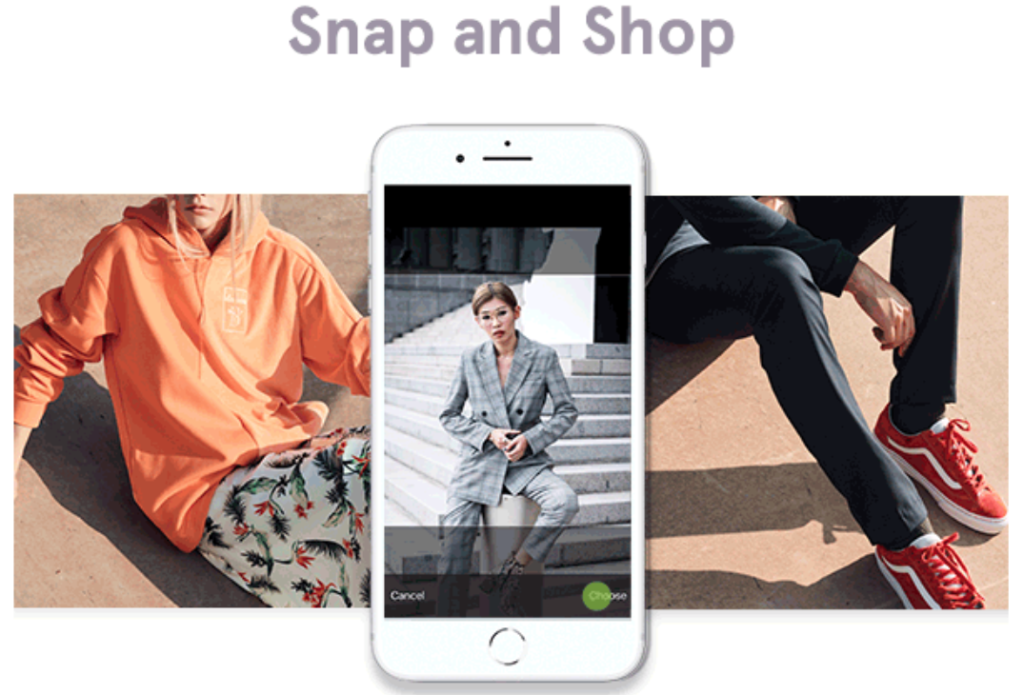
One retailer leveraging intelligent image recognition is Zalora, a fashion e-commerce platform popular across Southeast Asia. They added visual search capability to their Android and iOS apps. Customers could use the app’s camera to take a photo of a piece of clothing or accessory they liked and find the exact or similar product on Zalora’s catalogue.
As a result, conversion rates increased and shoppers were able to find products faster. To offer a superior search and discovery experience, Zalora paired the image recognition technology with product recommendation capability.
2) Visually Similar Recommendations
With visual search, e-commerce sites can recommend products that a buyer might be interested in. There are many product recommendation engines on the market using different data points to determine the most relevant products to show, and computer vision is one of them. Using visual cues in a product based on colour, style, shape and many other filters, AI engines can provide the most similar items to visitors in a fraction of a second.
Mataharimall, one of the largest e-commerce marketplaces in Indonesia, uses visually similar product recommendations based on the items shoppers are viewing.
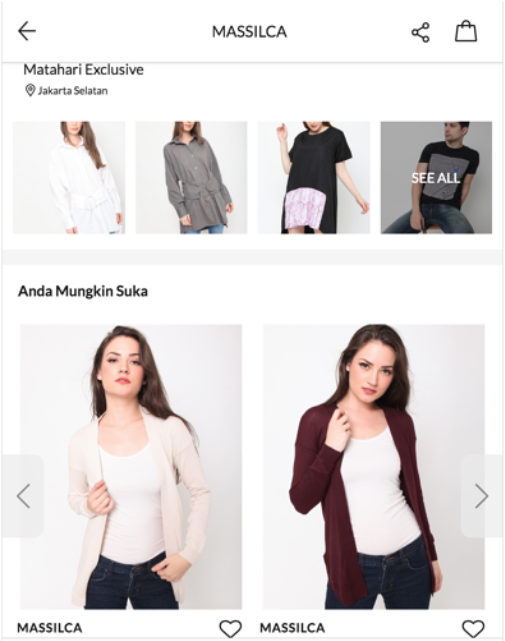
As a result, the marketplace’s click-through rate increased by 27.3 percent. The intelligent recommendations improved product discoverability, especially for items in the fashion category.
3) Shop the Look
With celebrity fashion and influencer trends mainstream sources of inspiration for many shoppers, publishers and brands are starting to leverage visual technology to deliver a more seamless and relevant buying journey for trend-conscious consumers.
Shop the Look allows users to select multiple items within a picture that compliment each other. For example imagine a snap of a celebrity on Instagram whereby you can click and buy the t-shirt, skirt, shoes and even accessories they are wearing, or a variety of furniture items showcased in an interior design company’s catalogue, all direct from the one image.
The advantage of such applications is twofold, brands and publishers have the opportunity to sell multiple items in a single image increasing CTR and basket size, and consumers benefit from a shorter journey of discovery-to-purchase for any given style.
Wayfair, a furniture retailer, uses product tags on its website to help customers find every item in a photo. Shoppers can also use the tags to add items to their personal ‘idea boards’, which they can share with family and friends.
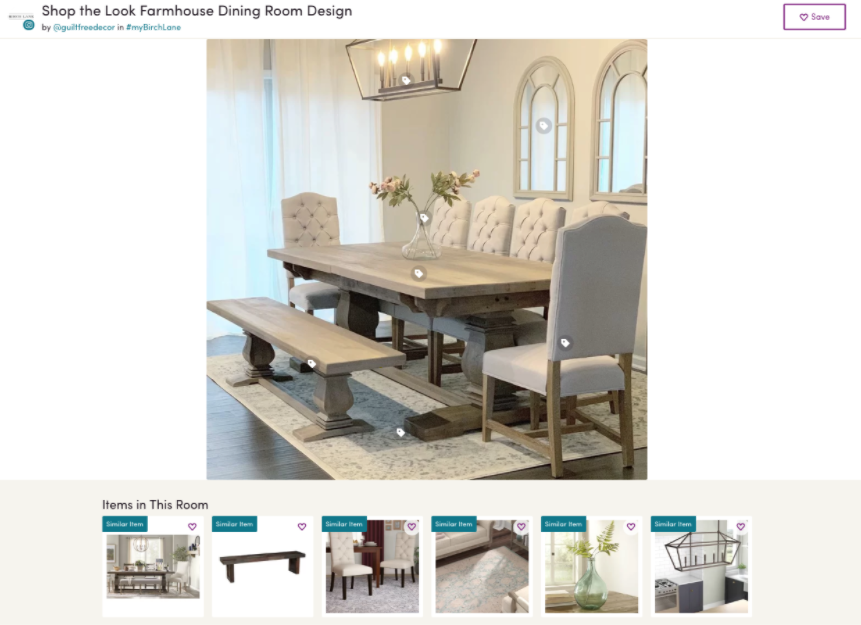
4) Augmented Reality (AR) in Personalized Shopping
There are items that shoppers absolutely must try on, but they can be too lazy or time-strapped to visit a brick-and-mortar outlet.
AR helps solve this dilemma. This technology superimposes or overlays digital images onto a real-world environment.
One of the more popular examples of AR in retail is Specsavers Virtual Try-on. Using this tool, customers can ‘try on’ hundreds of glasses without having to be in a store.
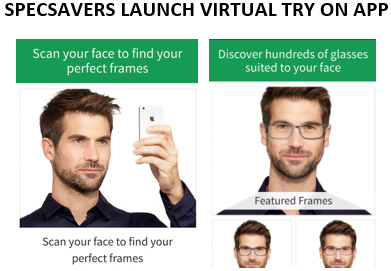
The app scans your face to identify if you’re male or female and then begins to (with your permission of course) take a scan of your face using the front camera. The app then generates a captured 180 degree view so you can try on frames and inspect them from every angle.
5) Smart Mirrors
An even more innovative way to bridge online and offline worlds—making retail truly omnichannel—is to integrate visual search with IoT. This is the concept behind ‘magic mirrors’ in stores. Customers in the shop can virtually try on products. Next, the mirror searches for the items in the store’s digital catalogue.
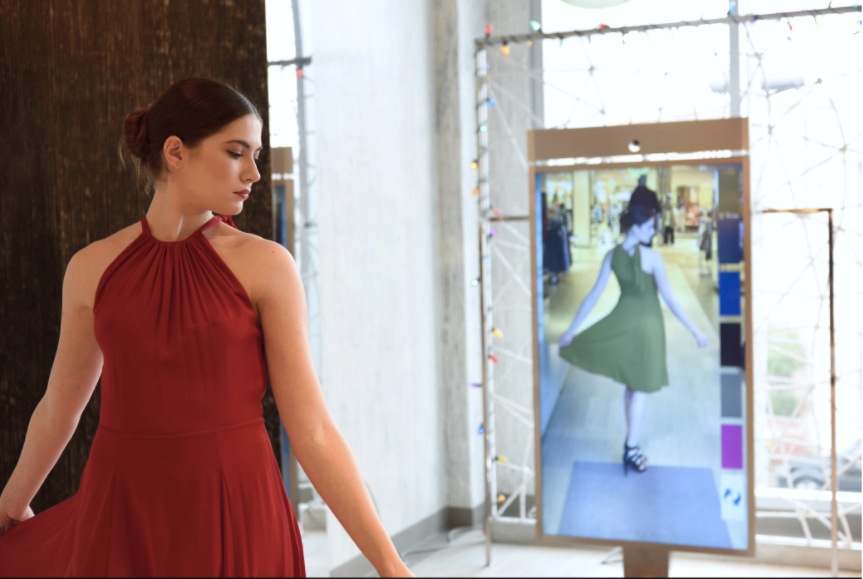
Memory Mirror, for example, allows shoppers to stand in front of the digital mirror and virtually try on clothes. In some applications, buyers can log in to their accounts on the retailer’s online store. They can further sync it with the mirror to remember the items they like and purchase them online when they get home.
Personalized shopping is for inspiration-driven consumers
The shopping experience has become more personalized, even as the Internet presents consumers with more and more choices. Influence can often come from something seen in real life or on social media. It not just found in ads and online stores.
With the power of visual AI, retailers can harness these sources of inspiration. Additionally, they can turn them into opportunities to convert people into customers.
FAQs
Question: What is visual search?
Answer: Visual search refers to customers searching for products through images. It is an AI-driven technology which is now being used by e-commerce sites. It recommends products that a buyer might be interested in based on images taken through a camera or screenshots
Question: What are the benefits of visual search?
Answer: Visual search makes the modern shopping experience more intuitive and efficient, among many other benefits:
1. Shortens the customer discovery path
2. Improved product discoverability and visibility
3. Faster and Accurate compared to text search
4. Increased ROI on marketing and advertising spend
5. Better understanding of consumer behavior
6. Eliminates the need for lengthy and unsuccessful keyword searches
Question: How can retailers get started with visual AI?
Answer: More and more brands utilizing the power of visual search and its AI driven technology. Thus, it becomes essential to take advantage of the golden opportunity early to stay. It helps stay updated with digital trends and convert more people into customers.
Retailers can easily integrate their product catalog with a visual search provider like ViSenze. They can also use widgets to implement this on their website or app. To explore how visual search can transform your customer shopping experience, schedule a demo with ViSenze today.
If you’re interested in exploring how visual search can provide a personalized shopping experience, get a free trial with ViSenze today.

